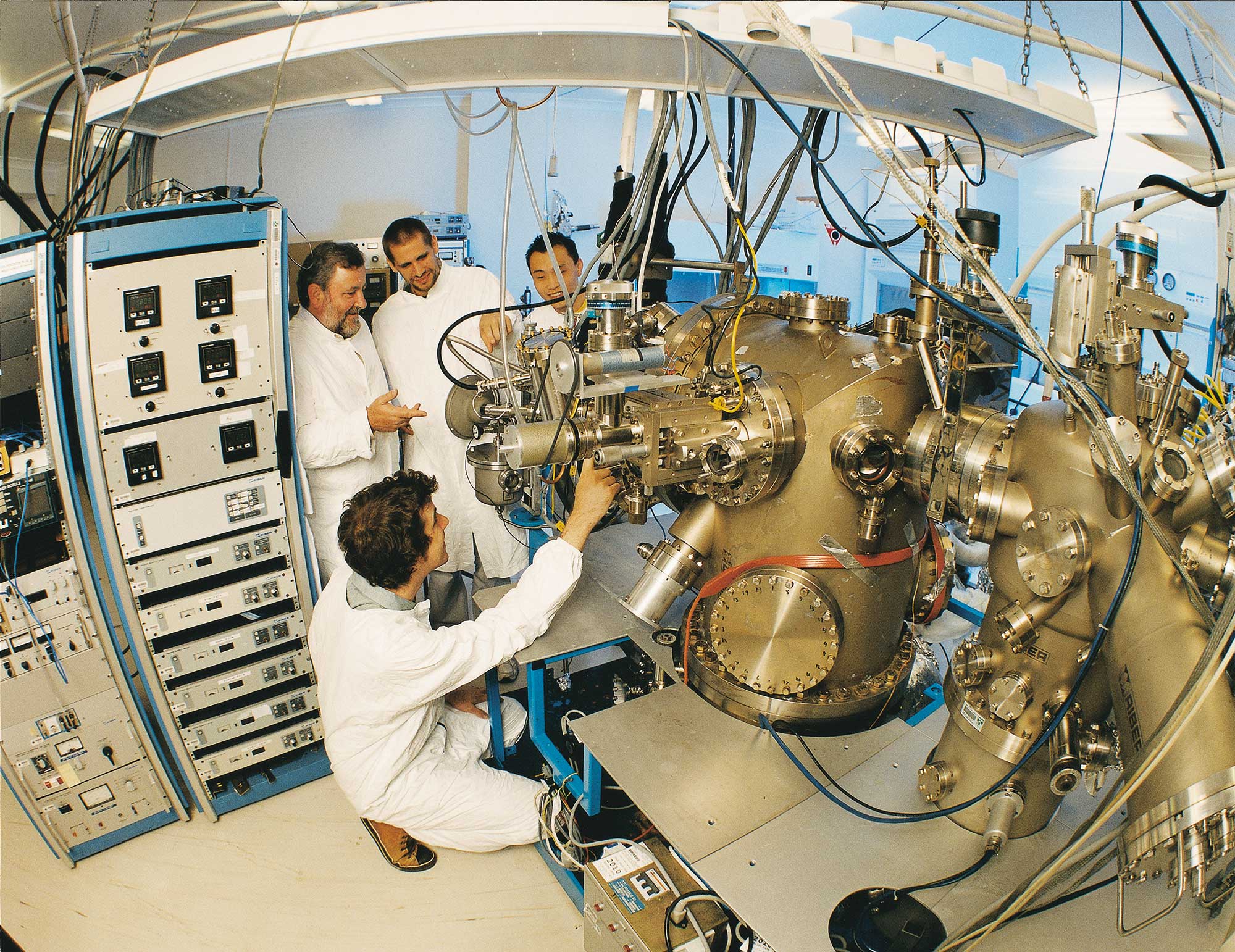
Laser processing uses a highly controlled and focused beam of high-energy photons of the same wavelength to burn away material. These processes are repeatable, scalable and cheap, but can induce thermal stresses on the substrate, and resolutions tend to be in the micrometre regime. Laser processing is often used within ANFF to create masks for later lithography steps, but it can also be used to create patterns directly into the substrate itself, skipping several ordinary fabrication steps.


